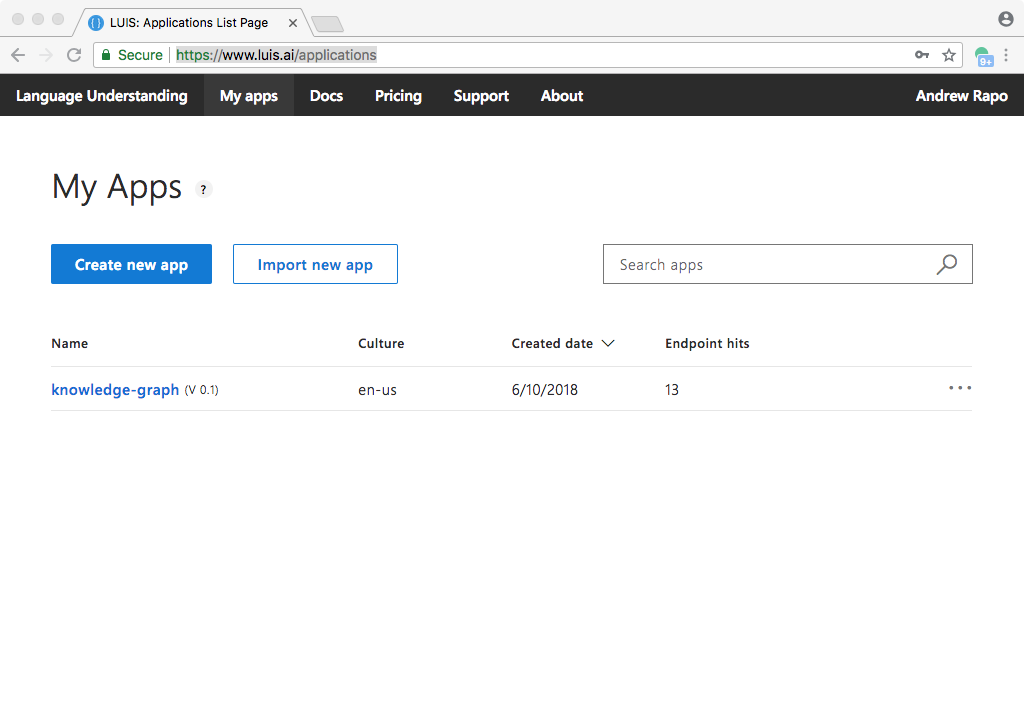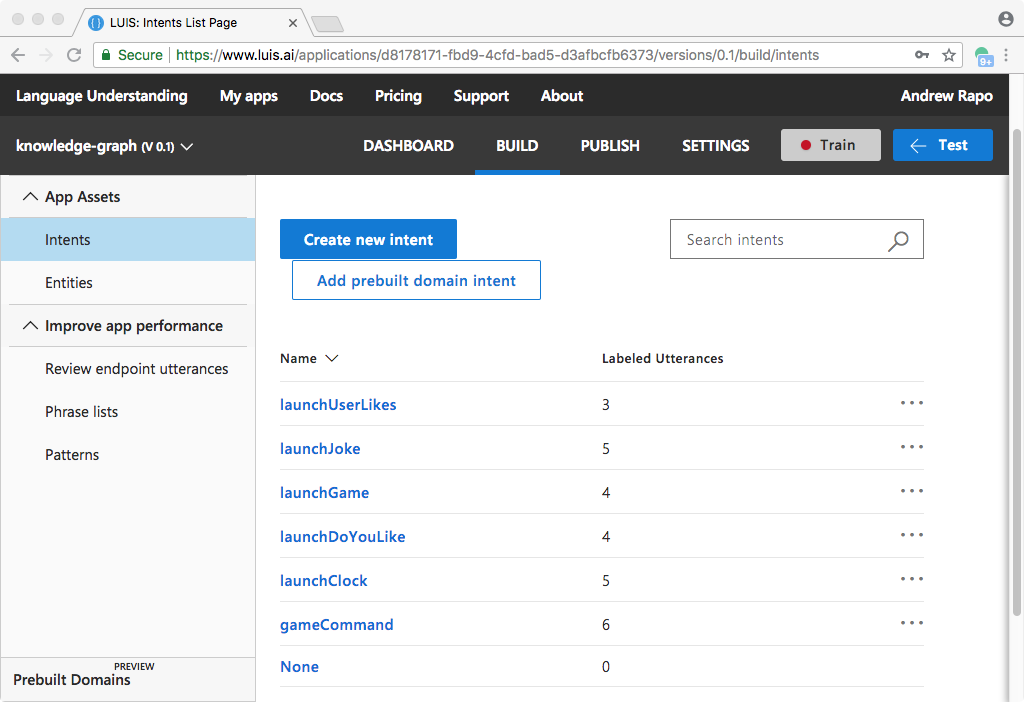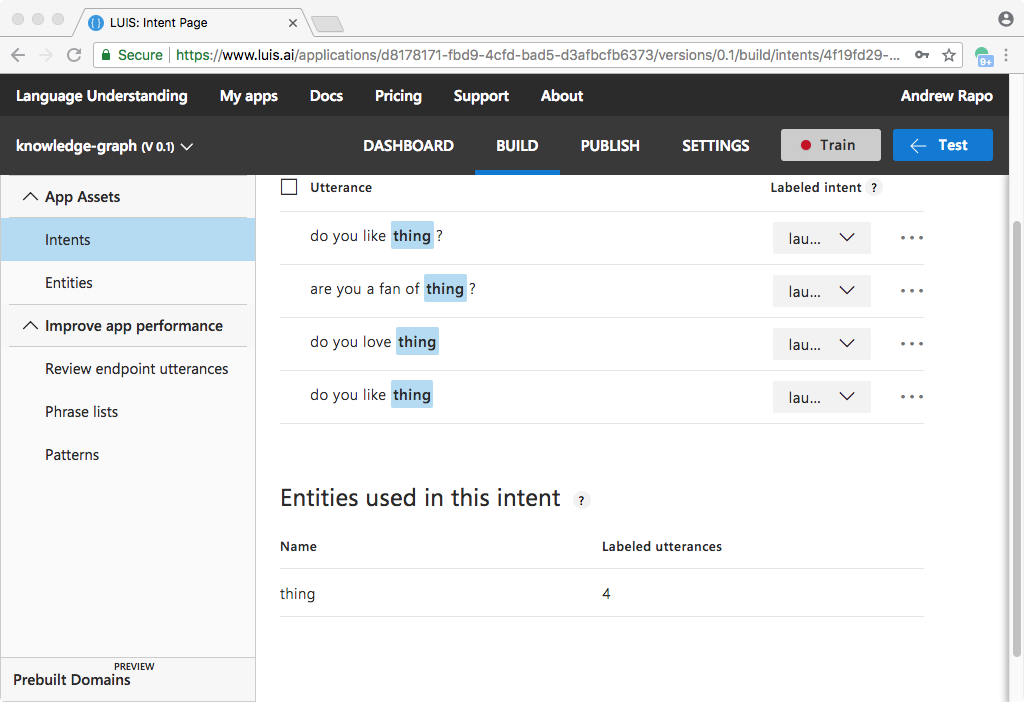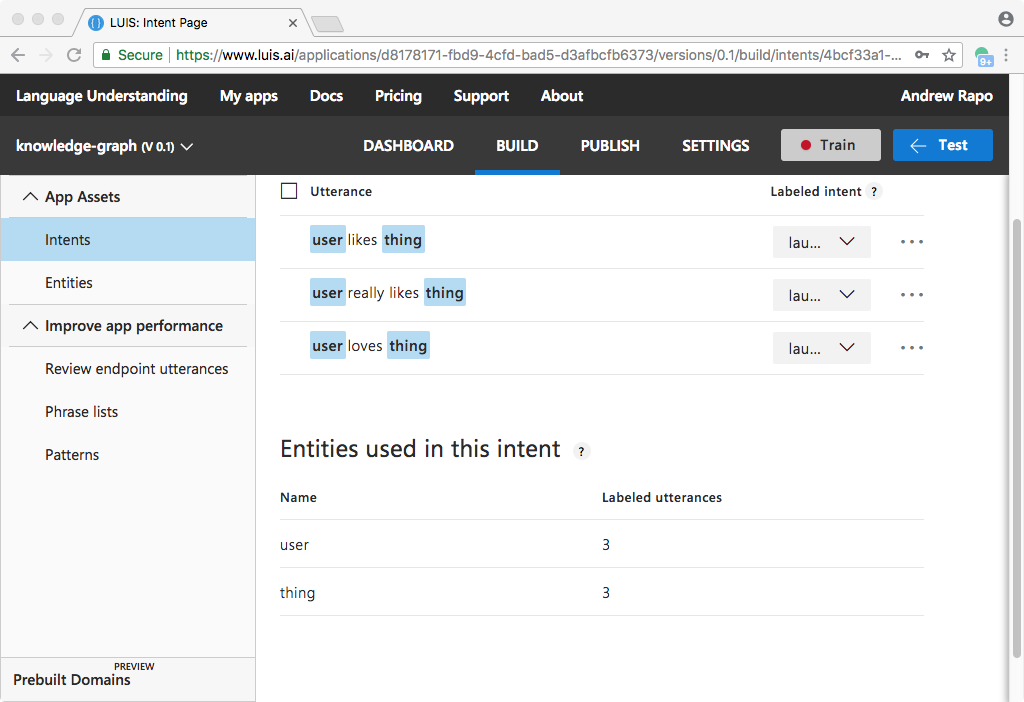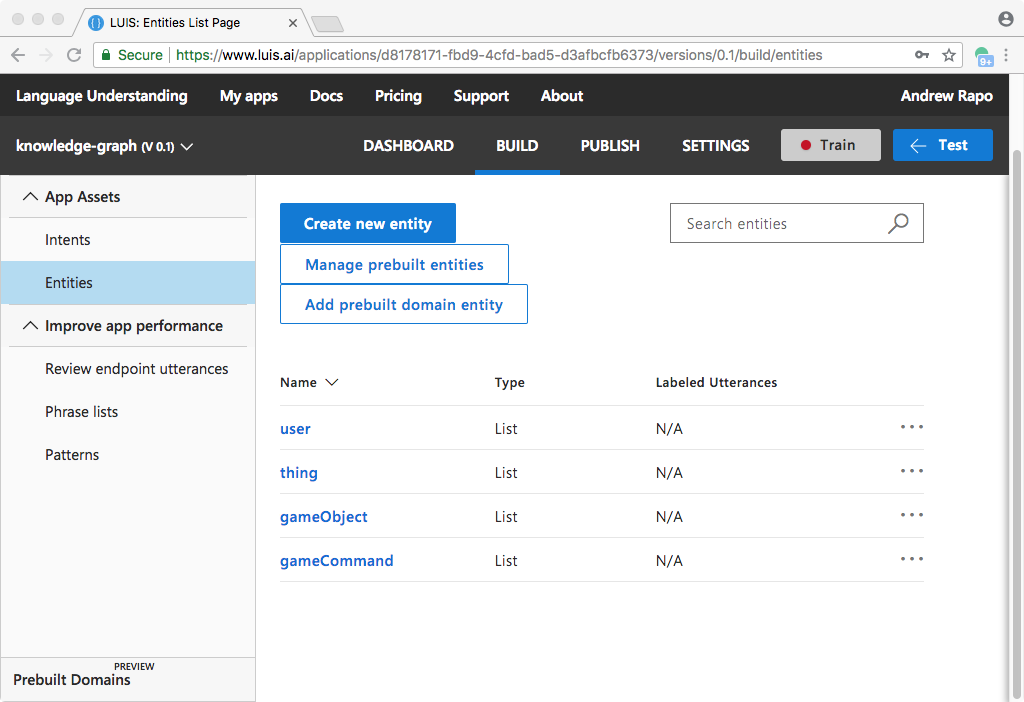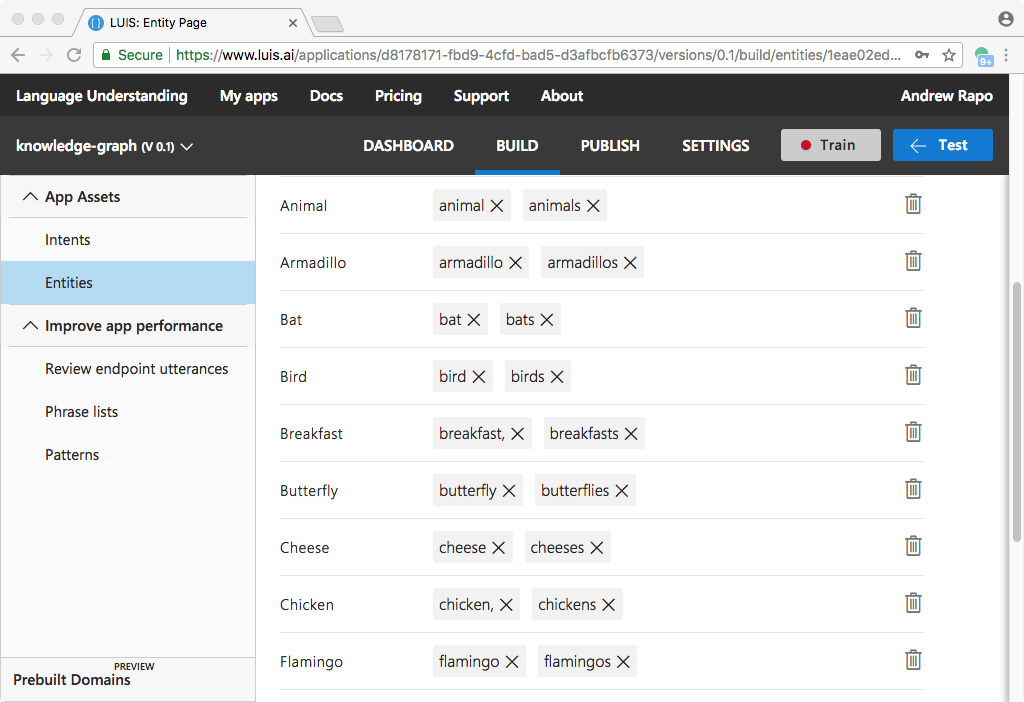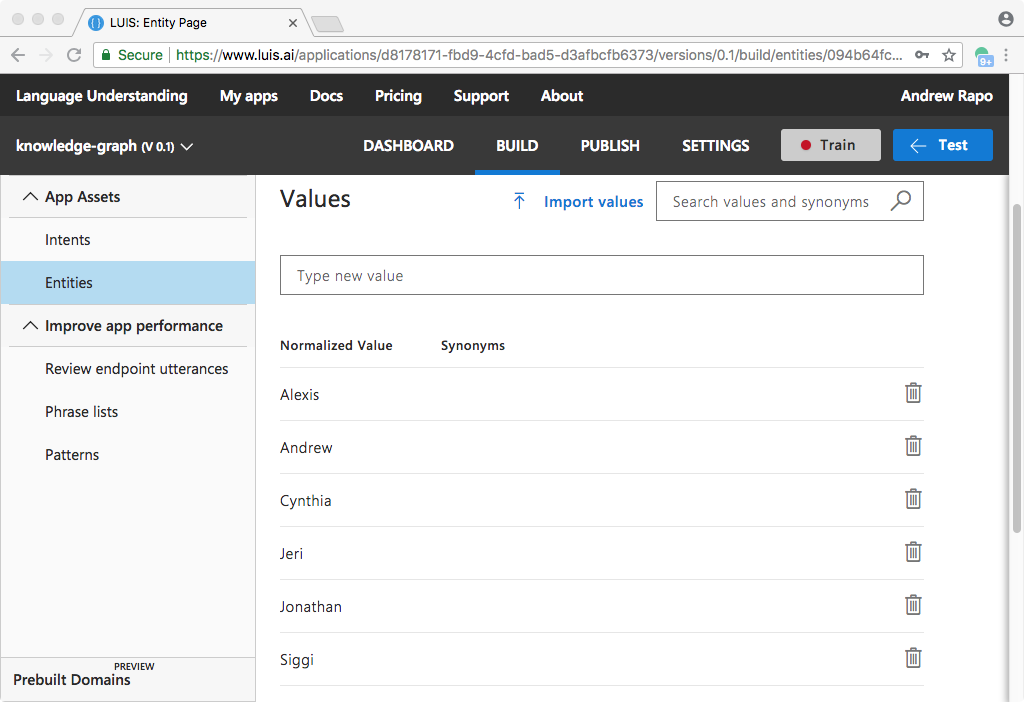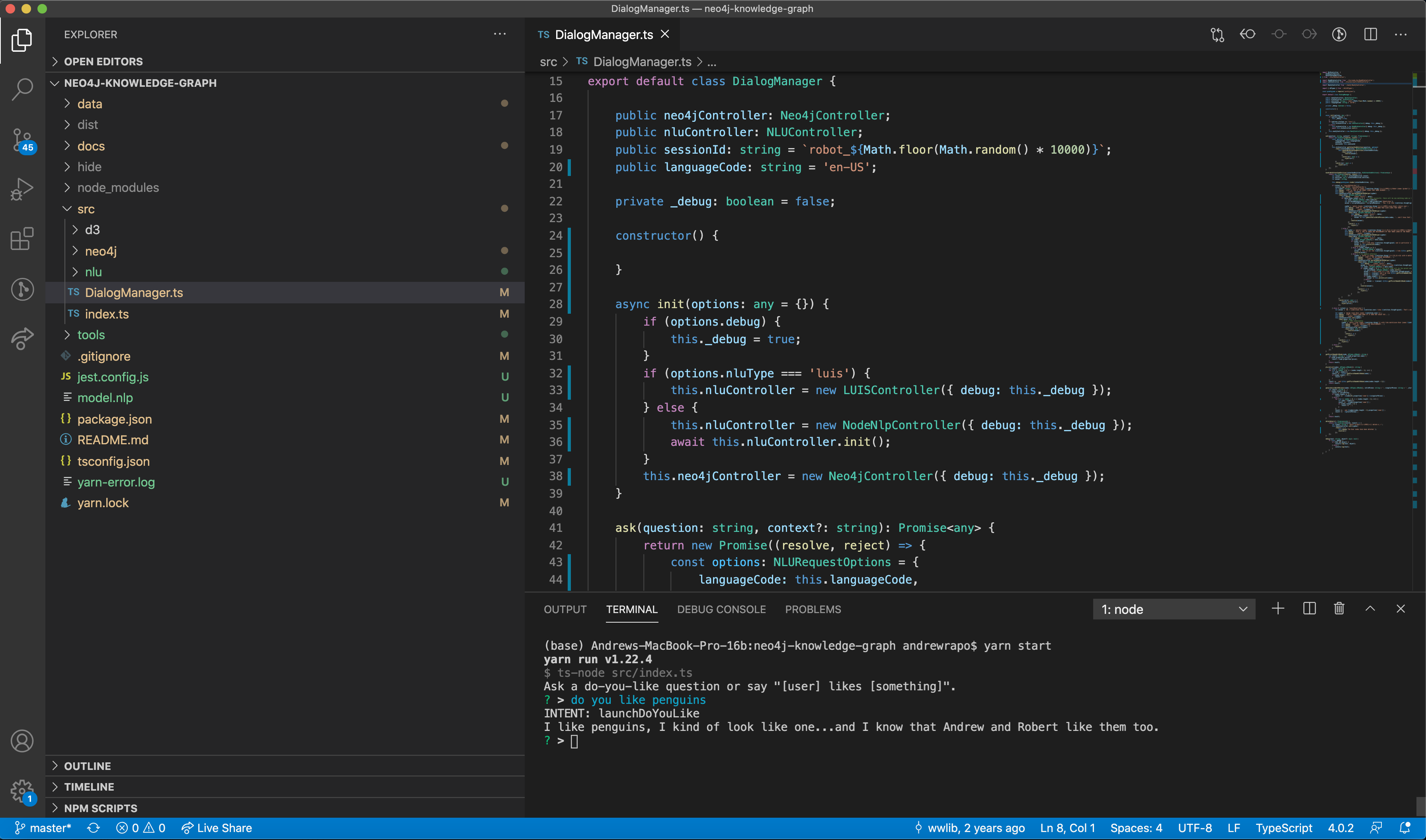
Subject: Neo4j Knowledge Graph
Language: TypeScript (node)
Repo: git@github.com:wwlib/neo4j-knowledge-graph.git
Related: Electron-based Graph Editor Tool: https://wwlib.github.io/graph-editor/
https://wwlib.github.io/neo4j-knowledge-graph/
https://github.com/wwlib/neo4j-knowledge-graph
An example of a simple, queryable knowledge graph implemented using neo4j with a node command line interface implemented in TypeScript.
Knowledge Graph Demo Demo Running on Jibo (YouTube):
Note: The code described in this post is based on an example that I worked on with Roberto Pieraccini (http://robertopieraccini.com/home/) at Jibo, Inc. We used a similar example to test a knowledge-graph-enhanced dialog running on Jibo (as seen in the video referenced above)
Note: A nice tool for viewing and live-editing neo4j graphs is called Graph Editor and is available at http://wwlib.org/graph-editor/
Overview video (YouTube): https://www.youtube.com/embed/YFRiWiZJPkU
One way to enhance NLU-driven dialog interactions is to make use of a knowledge graph. This example uses a neo4j graph (database) to store and query a knowledge graph (kg) containing information about animals. This simple example kg represents the relationships between a robot, and handful of animals, a few animal types and a couple of humans.
This command-line version uses node-nlp by default and can be configured to use Microsoft's LUIS NLU. A neo4j graph database is also required (ideally an empty graph). Some setup is required to get started.
1 - Clone and install the neo4j-knowledge-graph repo
git clone git@github.com:wwlib/neo4j-knowledge-graph.git
cd neo4j-knowledge-graph
yarn
The project looks like this:

2 - NLU (optional: create a LUIS NLU agent by uploading the included agent description file to your LUIS account:
See the NLU screenshots at the end of this post for descriptions of the LUIS agent.
3 - Neo4j Download and install the free Neo4j Desktop app from https://neo4j.com/download-neo4j-now/ and create a new graph.
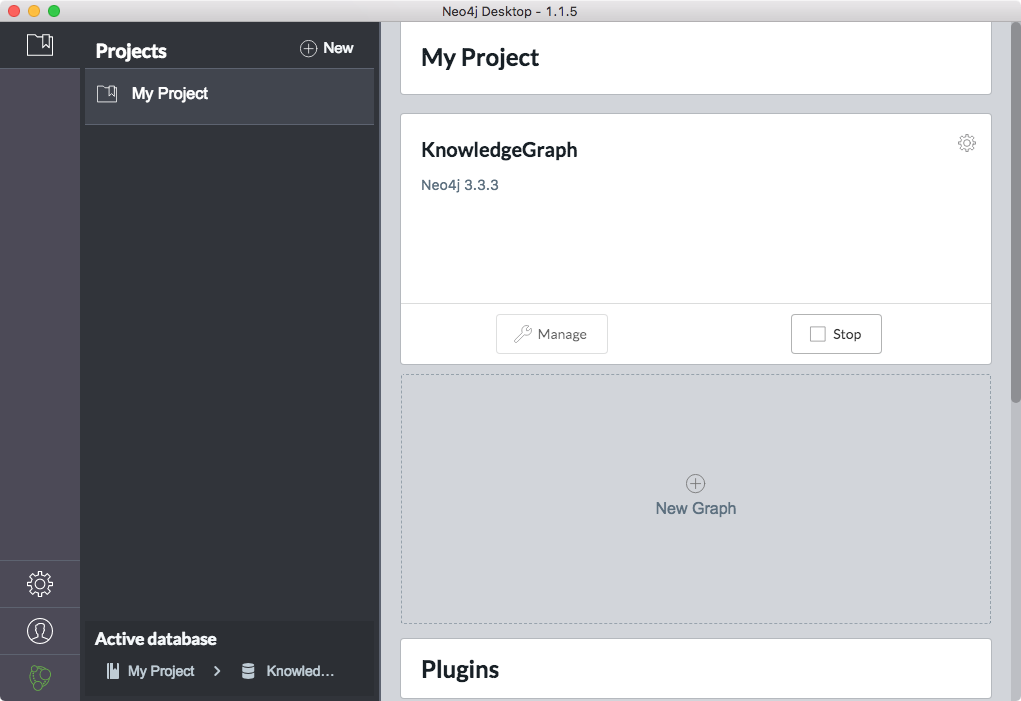
Start the graph and access it in the browser at: http://localhost:7474/browser/
To populate the graph, paste the contents of docs/animals.cypher into the neo4j browser query field. Then verify that the graph is ready by entering this cypher into the browser query field:
MATCH (n) return n limit 100
The result should look like the image below.
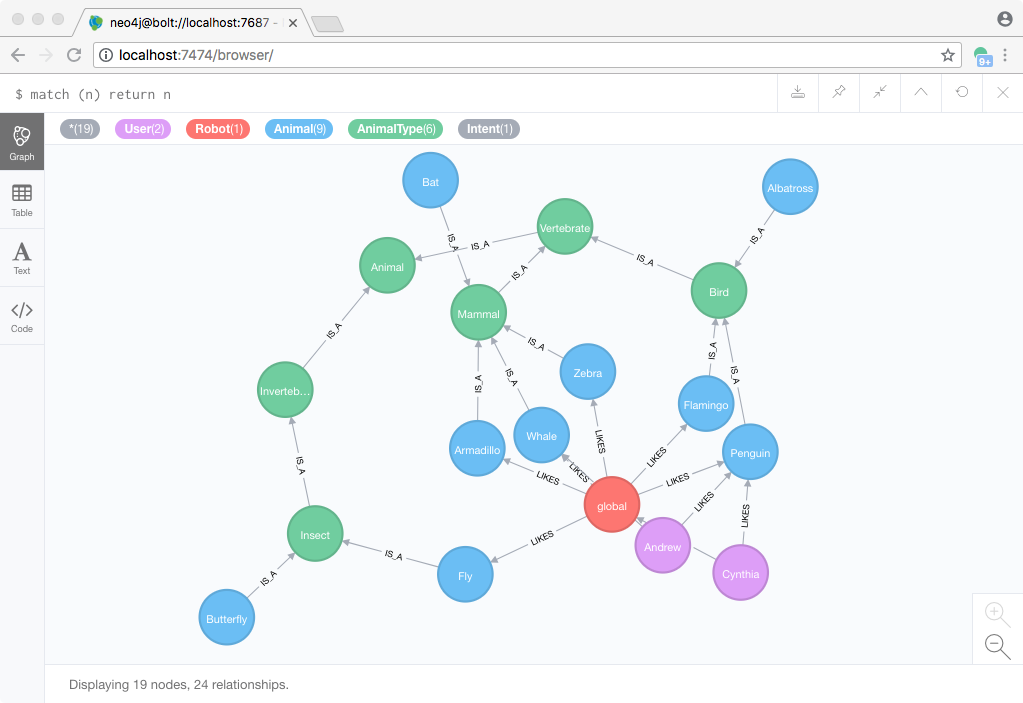
To see just the animal relationships, enter this cypher into the browser query field:
match (n)-[r:IS_A]-(m) return n, r, m
The result should look like the image below

4 - Configuring the neo4j-knowledge-graph command-line app
Copy data/config-example.json and rename it data/config.json
Fill out the user and password fields for your neo4j graph. (optional: fill out the access credentials for your LUIS agent).
{
"luis": {
"endpoint": "",
"appId": "",
"subscriptionKey": ""
},
"neo4j": {
"url": "bolt://localhost:7687",
"user": "neo4j",
"password": ""
}
}
Save the data/config.json file.
In a terminal window, in the neo4j-knowledge-graph directory, build and run the command line app:
yarn build
yarn debug
If everything is setup correctly, you should should be prompted with:
Ask a do-you-like question or say “[user] likes [something]”
Try asking (typing): do you like penguins
The response should look like the screen below:
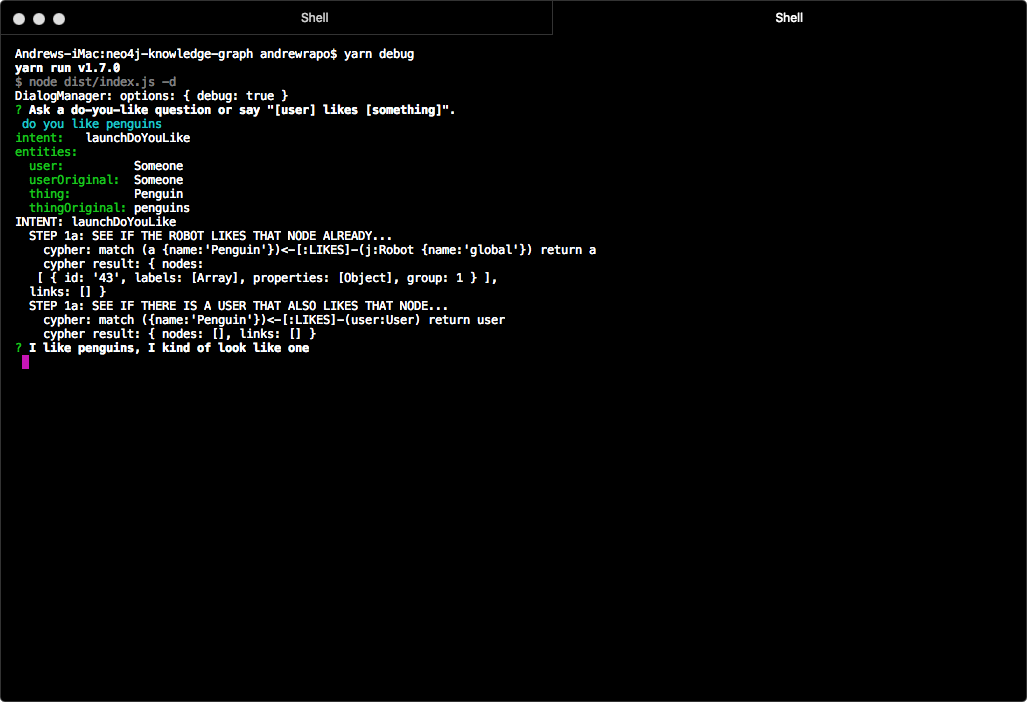
The example graph contains a set of animal-related nodes and relationships that looks like this (as seen in Graph Editor):
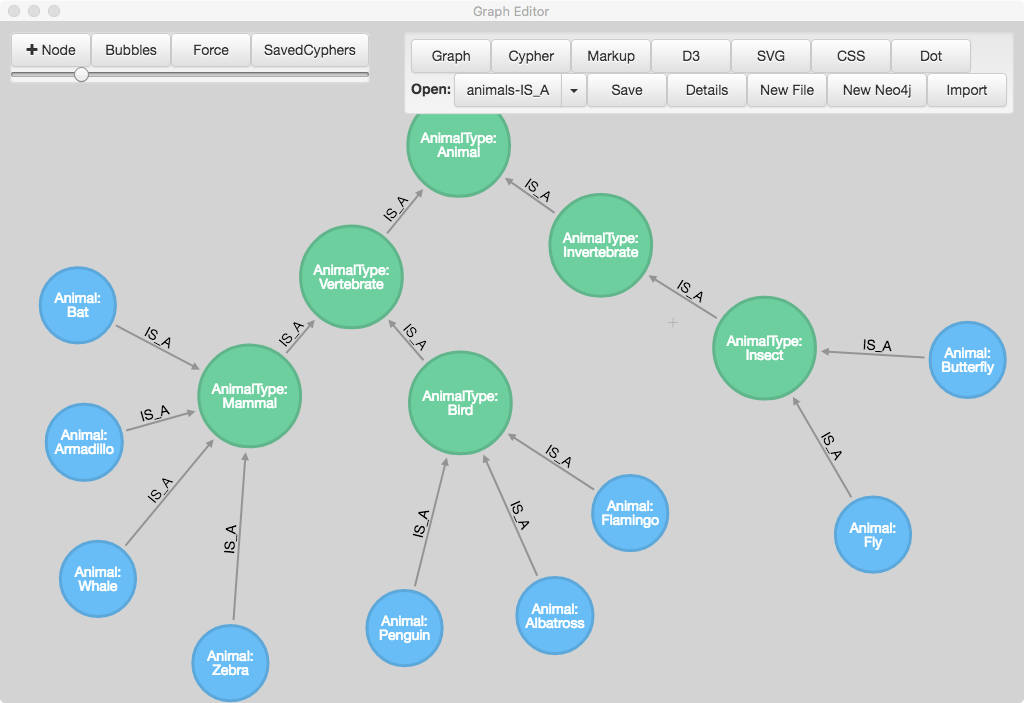
The graph also contains nodes and relationship relating a robot and a couple of users to the animals:
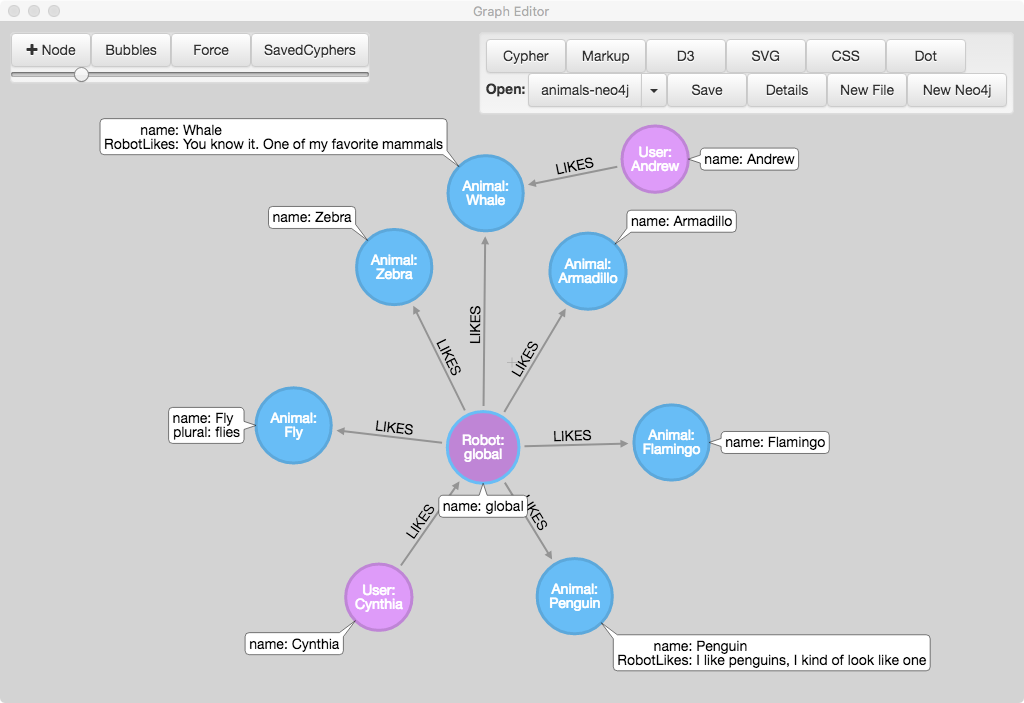
According to the graph, the robot likes Flies, Zebras, Whales, Armadillos, Flamingos, and Penguins. Andrew likes whales. Cynthia likes the robot. Asking, “do you like whales” produces the response below: “You know it. One of my favorite animals...and I know that Andrew likes them too.”
Note: In the Penguin node has a special RobotLikes property which is used in the response. A generic response is generated for nodes that do not have this property.
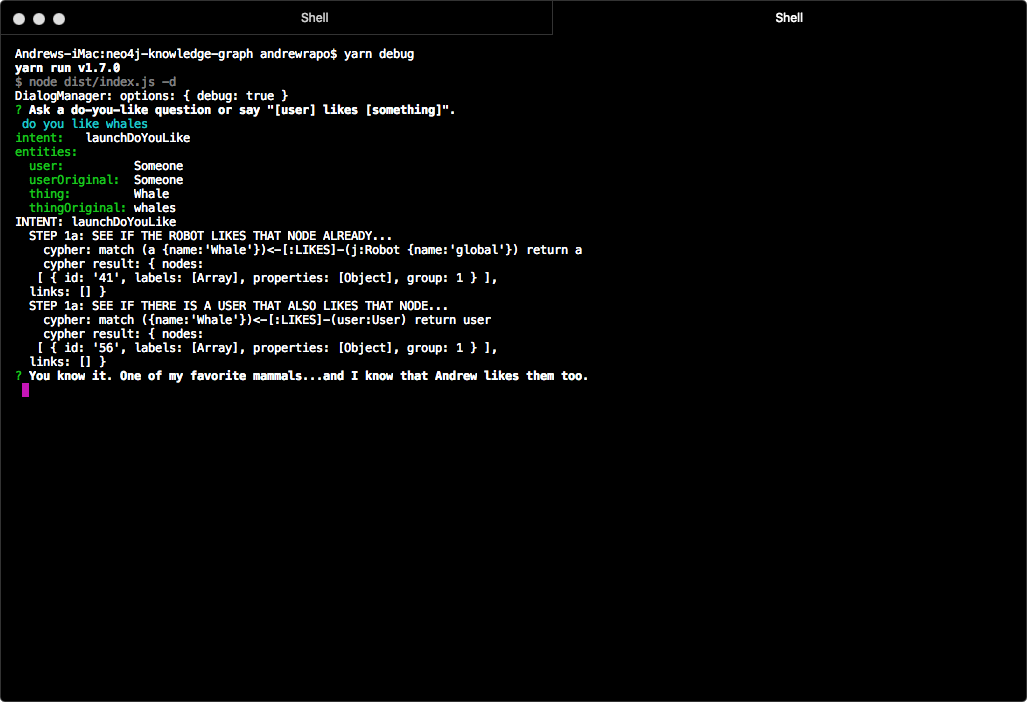
To answer the question, “Do you like bats”, the app must make an upward reference because the robot does not have a direct LIKES relationship to bats. The app checks the bat’s parent node, AnimalType (Mammal), and then responds with a list of mammals that the robot does like:
“I don’t know if I like bats, but they are Mammals and I do like Mammals. Of all the Mammals I like Armadillos, Zebras, and Whales.”

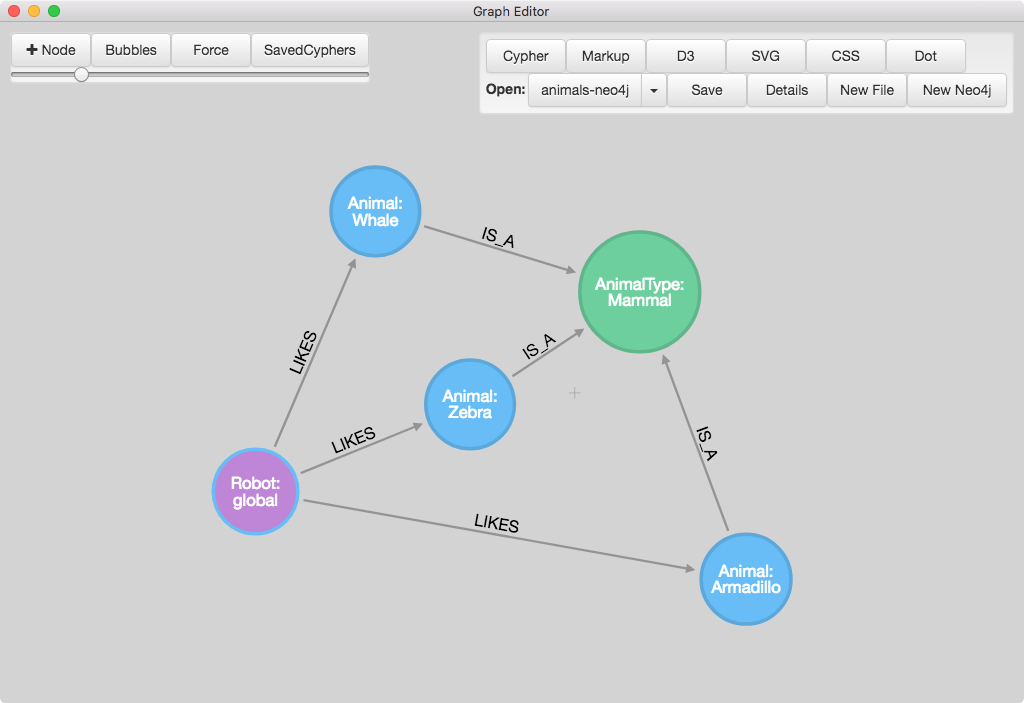
The graph can be modified by asserting that a user likes something. For example, asserting that “cynthia likes penguins” produces the result:
OK. I understand that cynthia likes penguins. That’s cool.
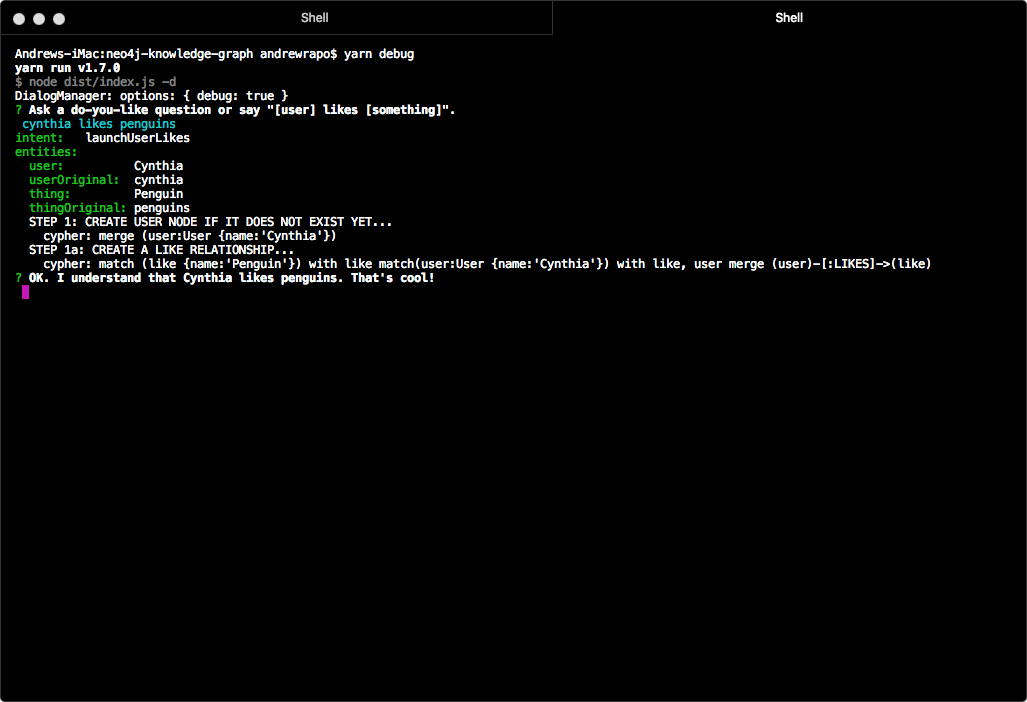
Querying the graph now reveals that the fact that Cynthia likes penguins has been incorporated:
match (n)-[r:LIKES]-(m) return n, r, m
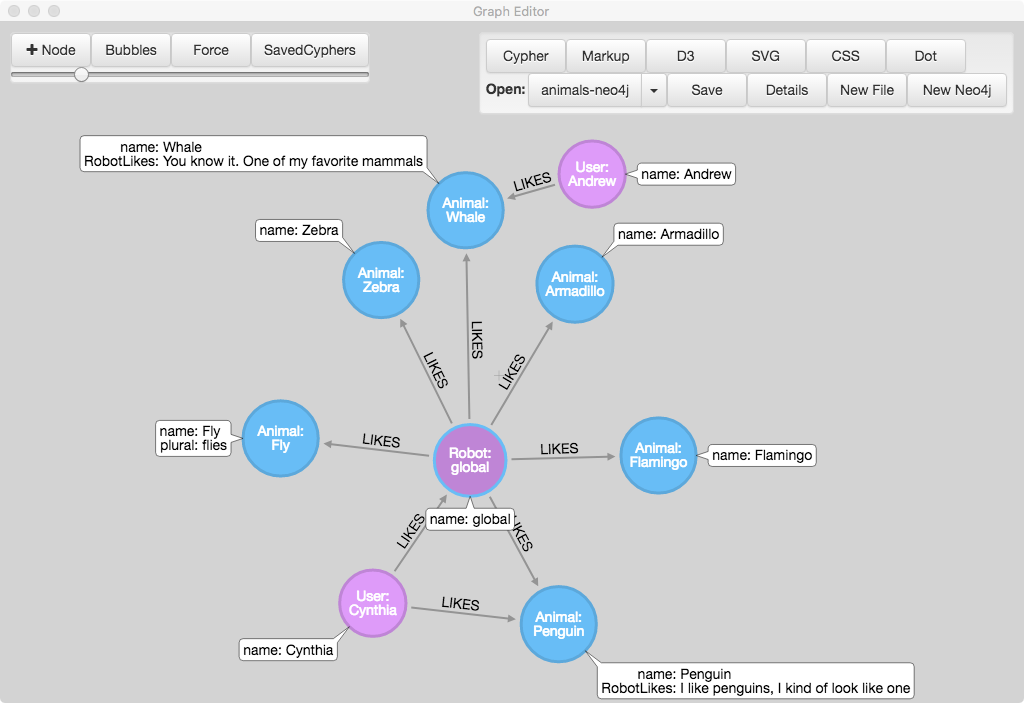
Now, asking if the robot likes penguins produces a response that includes the new information about Cynthia:
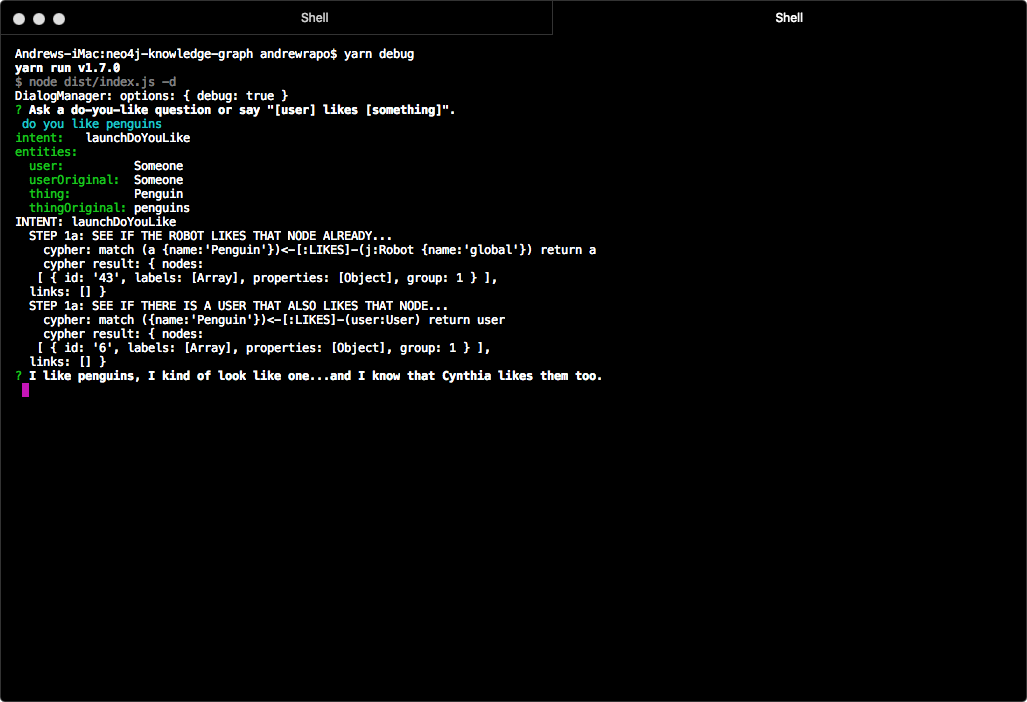
When asking about an AnimalType, like ‘Animal’, the answer will include all of the descendants that are liked by the robot.
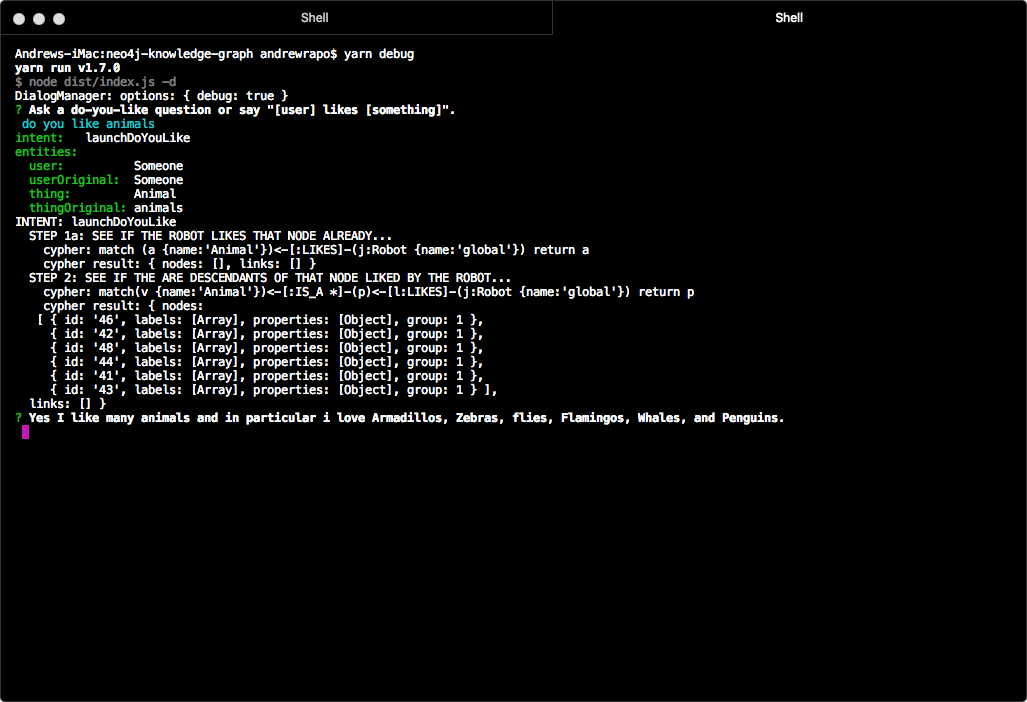
This simple example offers a quick way to incorporate a knowledge graph into a dialog interaction. As seen in the intro video (at the start of the post) when this kind of interaction is embodied by a social robot like Jibo, the experience is compelling - especially when the app/robot remembers information asserted by the user.
The example suggests that knowledge graphs may offer a path to take to making automated dialog significantly more human-like
